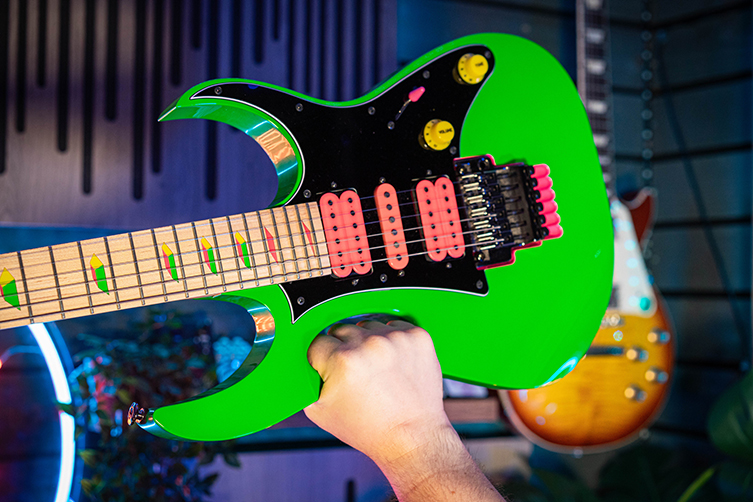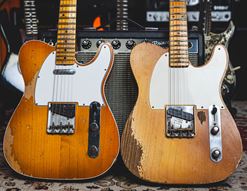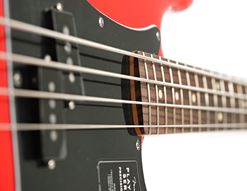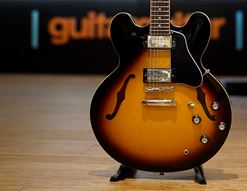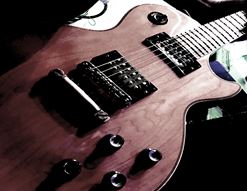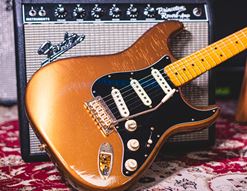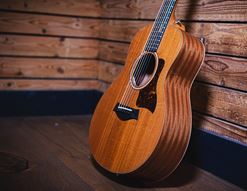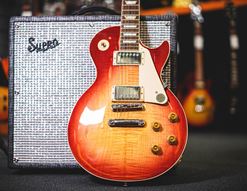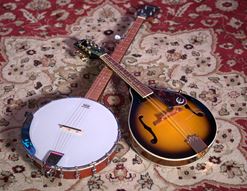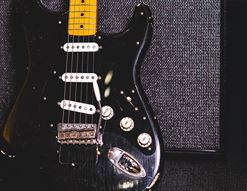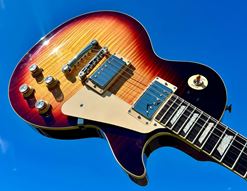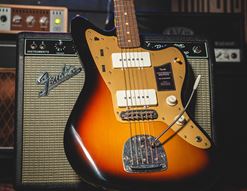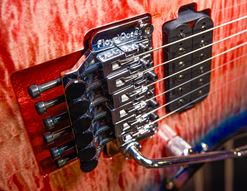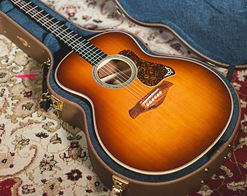Hey you hard rockers, I bet you love Ibanez guitars, don’t you? Of course you do! What’s not to love? They sound great, look bold, play extremely well and are available in all manner of shapes and sizes. From the traditional to the barmy, Ibanez have your back.
But what’s with those long code names they use for the guitar models? Is it some new form of futuristic machine-code? Neo-hieroglyphics? Nonsense?
No, none of the above. It all does actually follow a pattern, and can be deciphered. I told myself that this would be a good idea for a blog - a service to all of guitar playing humanity, obviously - but goodness me, it gets a bit complex to explain…
However, explain it I shall, and if you give me a few of your precious minutes, you’ll soon be as expert in the ways of Ibanez nomenclature as I am.
Care to join me?
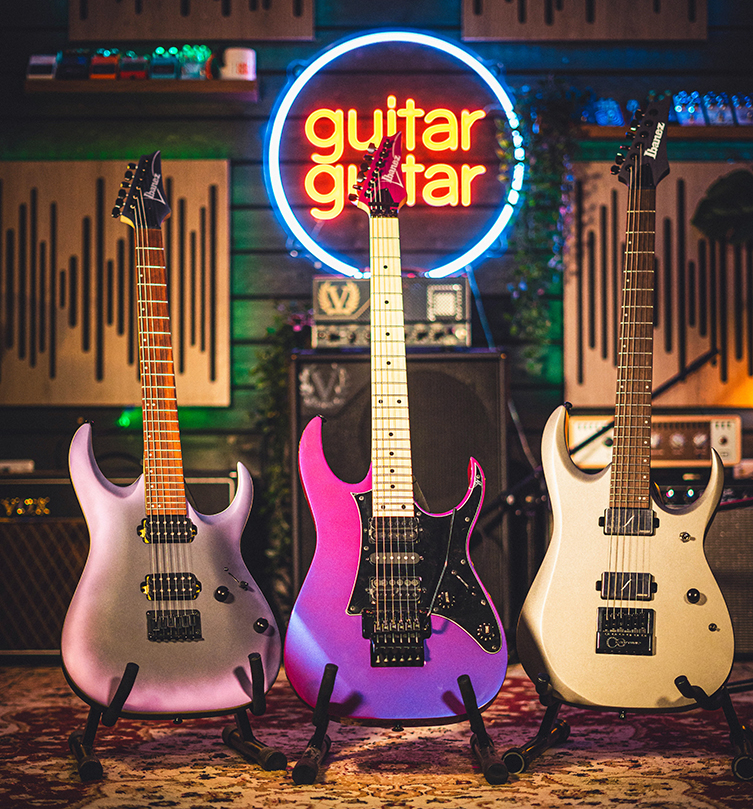
Contents
Look at it as Three Sections
So, as stated in that catchy headline, the easiest thing to do is to look at any Ibanez guitar name as three sections. Those sections are the following:
- Series: such as RG, S (for Saber), JEM and so on.
- Model: It’s normally a number, like for example an RG550’s model would be the 550 part.
- Features: there are one or two parts to this, and they explain certain notable parts about the guitar, such as the bridge type, or a special figured top.
Now that’s basically it in simple terms, but I feel that this won’t help much unless you understand more about the numbers and letters themselves. So, for that reason, it’s time for a deeper dive. It may be impossible to be comprehensive since there are literally hundreds of current models and about 60 years of previous Ibanez guitars out there, but what I outline here should hopefully prove helpful at least.
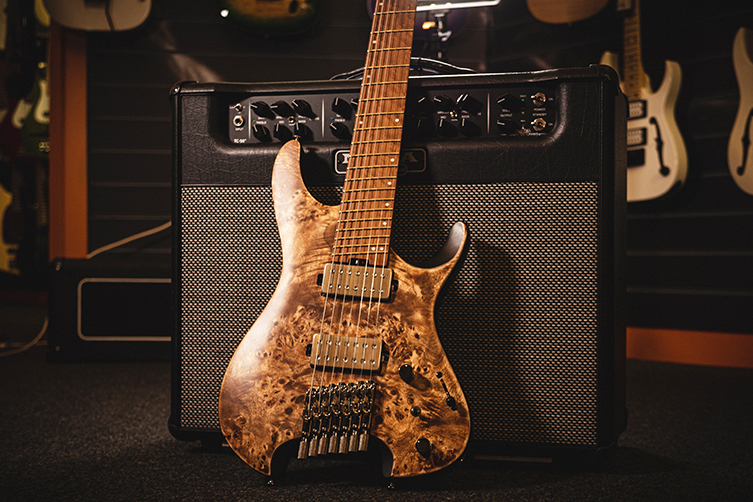
Ibanez Series Codes
Mostly, this section identifies the overall style of the guitar. You’ll already know that an Iceman is a different shape from an RG, and even that an RGD is a different shape from an RG. That needn’t be further elaborated, so here’s the list of selected series codes:
- RG - Superstrat, or a JEM without the extra bits
- RGD - extended range RG with revised body shape
- S - Saber, the really skinny-bodied shred guitars
- JEM - You know what this is.
- UV - Universe range
- JS - Satriani’s models
- JIVA - Nita Strauss guitar range
- P - new shape, very exaggerated horns on an 80s-style Superstrat
- SA - Like the saber but with carved top and flat back
- AR - Artist, it’s a thick-bodied double cutaway guitar, not unlike a mix between a Gibson LP and Yamaha SG
- X - Xyphos, similar to a Jackson Warrior
- IC - Iceman. Paul Stanley, White Zombie or System of a Down, depending on your taste.
Artist models - apart from certain folk like Satch and Vai who have loads of guitars within their own ranges - tend to have their initials plus an M for ‘model’, so PGM would be ‘Paul Gilbert Model’, and so on.
Okay, there are more out there (LOADS more) but this should get the point across!
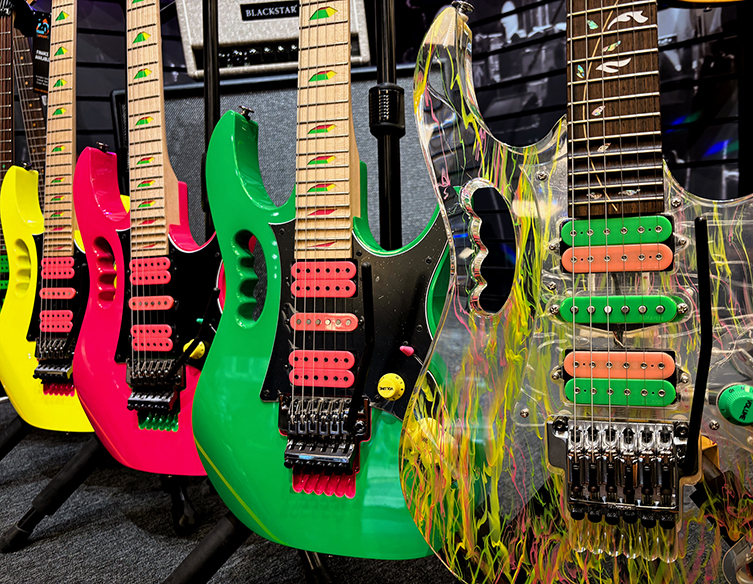
Series Prefixes
Before we move on, there’s more. You thought it would be that simple? Come on.
Many Ibanez models have a series prefix, and they tend to refer mostly to manufacturing details. Here are a few, to illustrate the point:
- G - Gio range, the entry level Ibanez guitars. A GRG is a Gio series RG model.
- JC - J Custom, which is Ibanez’s Japanese Custom Shop at the Fujigen premises. A JCRG is an RG made by the J Custom team.
- US - USA Custom. Admittedly, you won’t see too many of these at all, since the US custom shop don’t often offer guitars for sale. This is mainly for artists’ guitars, but they do exist outside of that now and then.
Making sense so far? Good, because there are also Series suffixes too! This is all still the first section of the three-part names, ok?
The suffixes refer to a factor of the build, such as the type of neck join. Here’s a look:
- B - Body binding, so the RGB570M is an RG that has binding on its body.
- M - Mikro, the small kids’ guitar.
- R- Reversed headstock
- S - Set neck construction
- T - Thru-neck, or through-neck if you are British
Fantastically, guitars can have a couple of these suffixes. An Ibanez RGRT47DX has a reversed headstock and thru-neck construction.
Excellent, but what about the number bit?
I’m glad you asked…
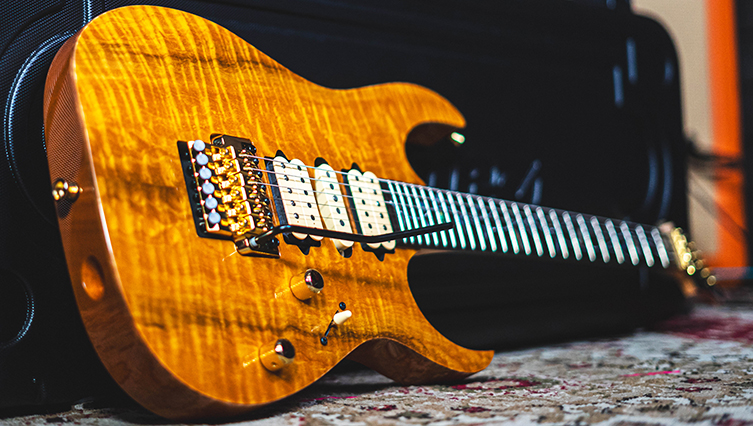
The Model Number
The number part is where things can become complicated. No, they weren’t already complicated, things were fine but now it all depends on which overall subrange of guitar we are talking about. Ibanez Iron Label guitars don’t necessarily toe the line, numerically, with the AZ guitars that Ibanez make. It’s not so much that they don’t make sense, as that there are tons of exceptions.
Let’s try to see the wood from the trees, now. MOST Ibanez guitars will adhere to this system for their numbers:
- 100 and 200 series: Gio
- Hundreds up to a thousand: increasingly expensive range. Standard range RGs are in the four hundreds (like the RG450DXB), and the fancier Genesis RG models have numbers in the five hundreds, such as the RG550.
- 1000 up to 5000: Premium
- 5000: Prestige
That’s the beginning. Then, for the rest of the model number, it’s like this:
The ‘tens’ (10, 20, 30 etc) denote pickup configuration and whether there’s a pickguard:
- 10: Single humbucker (H) pickup configuration
- 20: HH pickup configuration
- 30: SSS pickup configuration with pickguard AND ALSO HH pickup configuration with pickguard
- 40: HSS pickup configuration with pickguard
- 50: HSH pickup configuration with pickguard
- 60: HSS pickup configuration without pickguard
- 70: HSH pickup configuration without pickguard
- 80: HSH with direct-mount humbuckers
Now we need the last digit, the zero to ten part…
- 0: Doesn’t seem to have a specific designation, but guitars ending in ‘0’ tend to have tremolos
- 1: fixed bridge guitar
- 2: 12-string guitar
- 5: D-Tuner equipped BUT ALSO not having a middle pickup
- 7: Seven-string guitar
- 8: Eight-string guitar
- 9: Nine-string guitar
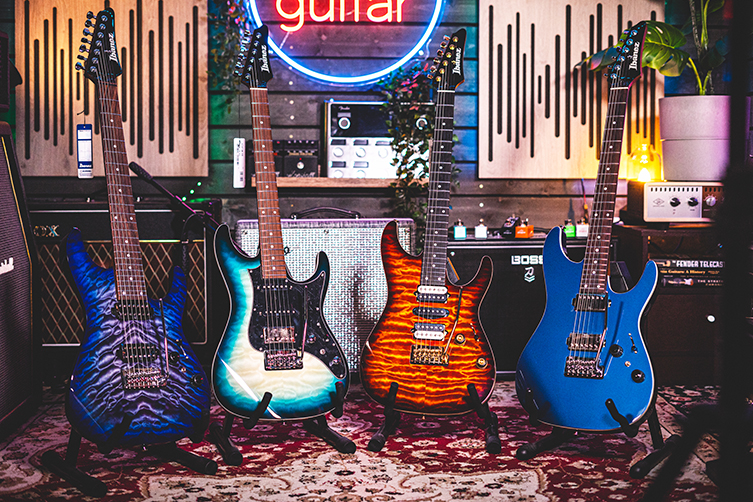
Examples
Let’s put this into some context with an example or two. Here’s the first one, accompanied by a picture so we can check to see if our arcane hieroglyphic reading has been accurate…
Ibanez GRG140
Okay, it’s a Gio series (the G at the beginning)
It’s an RG model
It’s a one hundred series, which also means a GIO model
The 40 at the end should mean an HSS pickup configuration with a pickguard.
Are we right? Let’s see a pic:

Bullseye! 100% correct. That was far too easy. Let’s go for a harder one…
Ibanez Iron Label RGRTB621
Now, the Iron Label guitars have their own rules, and I didn’t include them because I could feel you hyperventilating from information overload. There are some extra bits in here, but I bet you’ll be able to guess most of it:
It’s an RG shape
It has a reversed headstock (the second R)
It also has through-neck construction (the T)
It’s a 600 number, so fairly high spec but not Premium or higher.
What’s this 21? Scroll back up and see what those bullet points say. The 2 here is in the middle of 621, so it is a 20. 20 means HH pickups.
The 1? It should be a fixed bridge.
Right: this should be an RG with a through-neck, fixed bridge and two humbuckers. What else? A reversed headstock. We got all of that info from the code. But is it correct?
Have a look:

Bingo! Of course it was correct! I’m not trying to catch you out, I promise.
Now, we’re nearly there, but there’s a last bit. The third part.
The Last Part of the Code
Before we get too ‘Dan Brown’ about it, let’s just see what info we get from the last part of the code. Not every guitar has it, actually, but in true Ibanez fashion, those that do are specific and somewhat cryptic.
This last part is for further identification of special features. There is nothing to tie these things together at all, as you’ll understand when you see the list:
- DX: Deluxe, which can mean a number of things (yay!) but mostly extra inlays or binding
- E - EMG pickups
- E - can also be short for ‘EX’ (helpful), see below
- E - can also mean ‘Ebony’ as in ebony fingerboard (super helpful)
- EX - ‘Extreme’, which again means a number of things. Normally sharkfin inlays.
- FM - Flame maple top
- QM - Quilted maple top
- PB - poplar burl top
- Z - has an Edge Zero tremolo
- MS - multiscale
I’m sure you’ve noticed this already, but it definitely helps to have a visual of the guitar in question, particularly when Ibanez like applying multiple meanings to the same letter! If I was being less openly sarcastic, I’d mention that the location of the letter CAN be important (not always! haha!): so an E in the middle means ebony, and an E at the end will mean one of the other meanings. Phew!
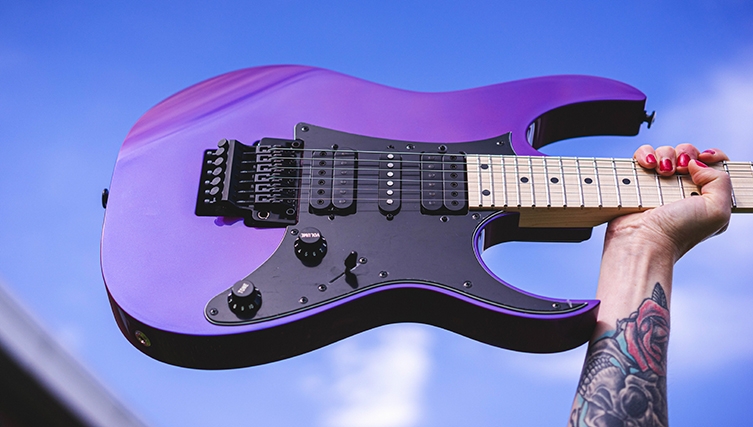
THEN the Colour Code
Yes, then there’s the guitar’s colour, which in truth is not part of the overall name, but often included in certain product listings. I’m sorry, I didn’t include this earlier but I feel that it’s unnecessary to know what Ibanez’s code for Cosmic Blue Starburst is (it’s CBS, of course!). If you feel like you need that info here, do let me know and I’ll forget you told me. I mean, I’ll add it in the future.
Unlock the Ibanez Code
If only ancient historians had such a helping hand deciphering old ruins, the world would be a better place. As it is, I can only guide you through this guitar-shaped corner of the universe, but I do hope that your more curious/train-spotterly inclinations have been satisfied by my gruelling research. With great power comes great responsibility, so wield this information with a light hand, and use it to help your fellow guitar lovers.
Or just do what I do and point at them, saying ‘that’s a nice green one’. It’s up to you!
Click to Browse our Ibanez Guitars
